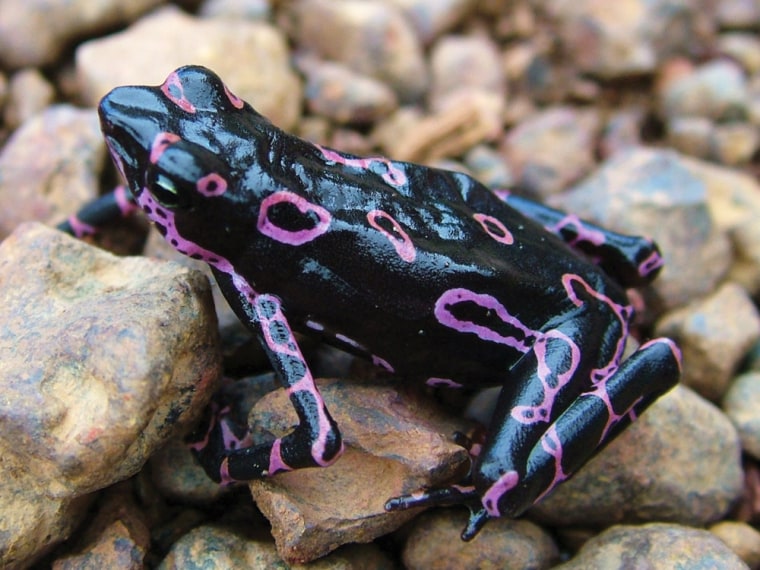A toad with fluorescent purple markings and 12 kinds of dung beetles were among two dozen new species discovered in the remote plateaus of eastern Suriname, scientists said Monday.
The expedition was sponsored by two mining companies hoping to excavate the area for bauxite, the raw material used to make aluminum, and it was unknown how the findings would affect their plans.
Scientists discovered the species during a 2005 expedition led by the U.S.-based nonprofit Conservation International in rainforests and swamps about 80 miles (128 kilometers) southeast of Paramaribo, the capital of the South American country, organization spokesman Tom Cohen said.
Among the species found were the atelopus toad, which has distinctive purple markings; six types of fish; 12 dung beetles, and one ant species, he said.
The scientists called for better conservation management in the unprotected, state-owned areas, where hunting and small-scale illegal mining are common.
The study was financed by Suriname Aluminum Company LLC and BHP Billiton Maatschappij Suriname.
Suriname Aluminum, which has a government concession to explore gold in the area, will include the data in its environmental assessment study, said Haydi Berrenstein, a Conservation International official in Suriname, which borders Brazil, Guyana and French Guiana.
About 80 percent of Suriname is covered with dense rainforest.
Thousands of Brazilians and Surinamese are believed to work in illegal gold mining, creating mercury pollution that has threatened the health of Amerindians and Maroons in Suriname's interior.
